I visited Okayama Castle, which has been renewed after its major renovation in the Reiwa era.
The renovation was completed on November 3rd, 2022, after about a year and a half of construction.

This major renovation included earthquake resistance reinforcement, barrier-free accessibility, and a complete repainting of the exterior walls, among other things.
Okayama Castle is also known by the nickname "Crow Castle" because its exterior siding is painted black.
With this renovation, its jet-black appearance has been revived.
Okayama Castle Keep: 岡山城・天守閣

The keep of Okayama Castle is pentagonal, asymmetrical, and irregular in shape.
It is considered a unique shape even when viewed nationally.
According to the Okayama City Tourism Promotion Division, the castle was built to take advantage of the original terrain, which resulted in its unique shape.
Okayama Castle was built during the Warring States period by Ukita Naoie as his stronghold, and during the era of Ukita Hideie in the 2nd year of Keicho (1597).
During the Warring States period, castles suitable for actual combat were in demand, so they were built as strong fortresses even if they had irregular shapes.

The reason for the black exterior walls is said to be because castles using high-quality black lacquer became popular during the era of Toyotomi Hideyoshi.
The keep of Okayama Castle, which was a national treasure before the war, was unfortunately destroyed in the Okayama air raid on June 29, 1945.
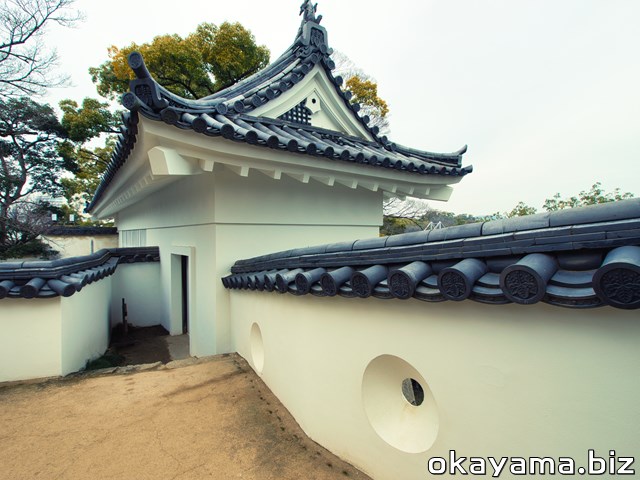
Okayama Castle Tsukimi Yagura: 岡山城 月見櫓
The "Tsukimi Yagura" of Okayama Castle managed to escape destruction.
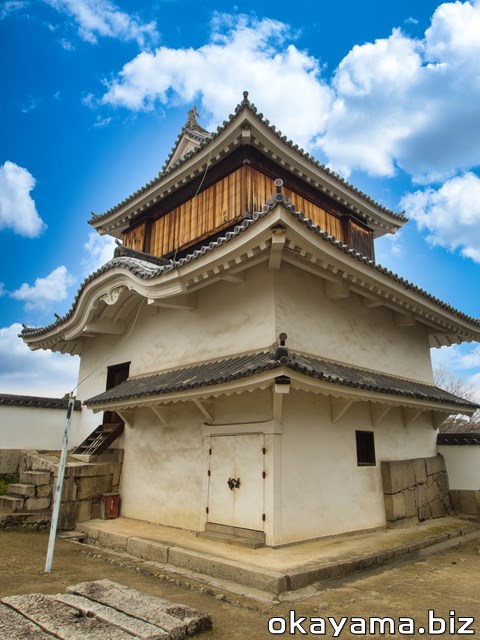
It is a small building constructed during the era of Ikeda Tadao in the Kan'ei period (1620s)
It features Chinese-style gabled windows and a palace-style design suitable for daily life.
This turret, reminiscent of bygone days, is designated as an Important Cultural Property (it was a national treasure before the war).
Originally, the turret was used as an armory, but during the peaceful Edo period, it was used to enjoy seasonal views like moon-watching or to host banquets.
Various Stone Walls of Okayama Castle: 岡山城の石垣
Stone walls from the Edo period still remain.
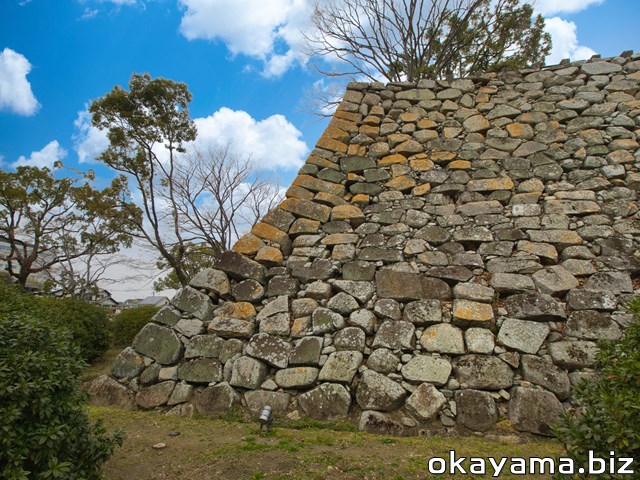
The earliest stone walls built by Ukita Hideie also remain and have been excavated from the ground.
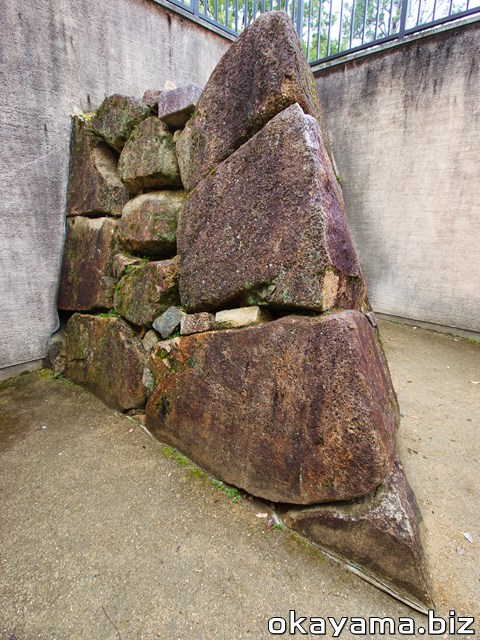
戦国時代の石垣は、より昇りにくくなるように切り立って、角が尖った形になっています。
Gun Loop Stones: 銃眼石
For defense, there are gaps to aim and shoot guns from inside the walls.
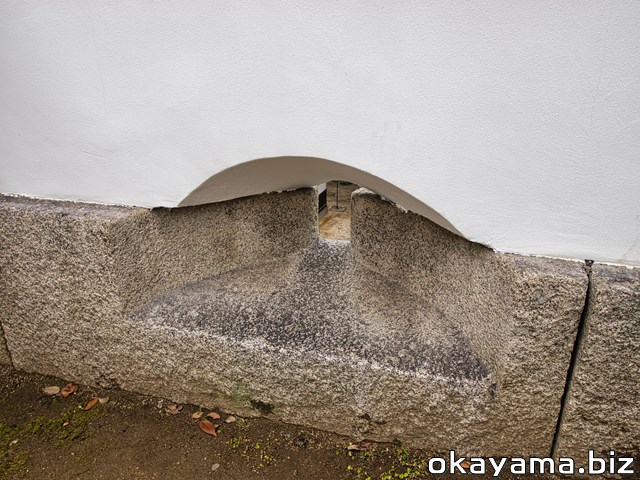
While most castles have gun loop stones, this particular design is said to be unique to the castles of the Tokugawa shogunate (Edo, Osaka, Nijo).
The lords of Okayama, the Ikeda family, were outside lords but were favored by Tokugawa Ieyasu and were related by marriage.
Perhaps because of this connection, the same gun loop stones were used.
Storage Caves: 穴蔵
Next to the Tsukimi Yagura, there are traces of a storage called "Anagura".
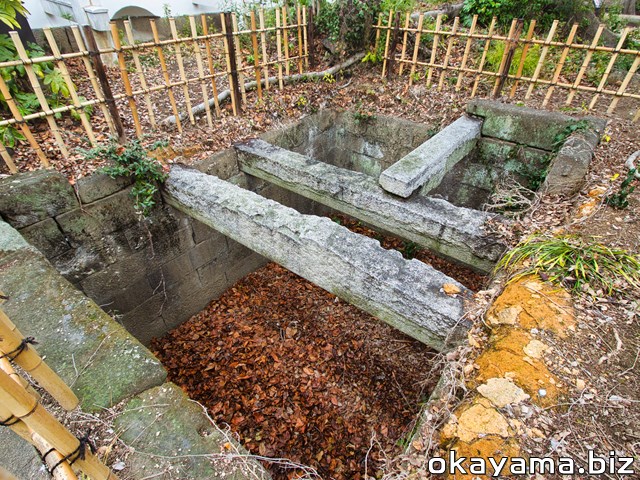
It was an emergency food storage, and it is said that it had a roof when it was built.
Unknown Gate & "Legend & Butterfly" Special Costume Exhibition: 不明門 映画『レジェンド&バタフライ』特別衣装展
Inside Okayama Castle, there's the "Akazunomon (Unknown Gate)" where special exhibitions are held.
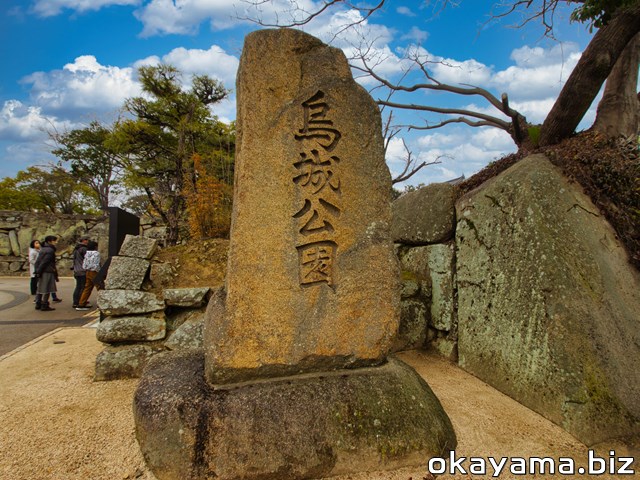
To promote the renovated Okayama Castle, a special exhibition displaying costumes from the movie "Legend & Butterfly", where Takuya Kimura played the warlord Oda Nobunaga and Haruka Ayase played Lady Nouhime, was held.

I visited because my Taiwanese wife, Ikurin, really wanted to go.

It was our first time entering the Unknown Gate.
Panels of important scenes from the movie were displayed. Ikurin took a photo with Kimura Takuya.
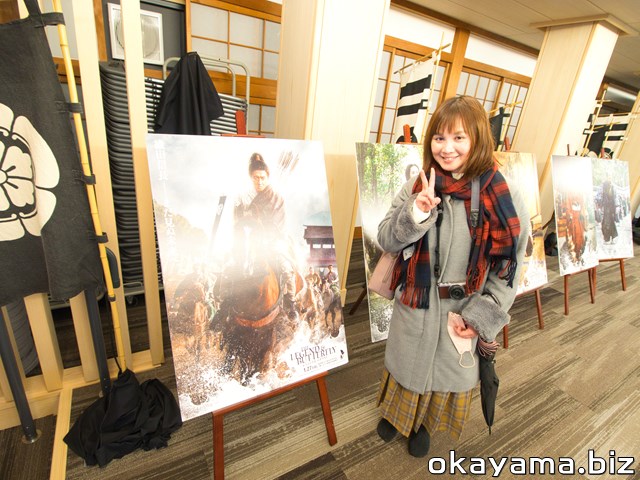
The main exhibits were the nightwear and cloaks used in the movie's climax.
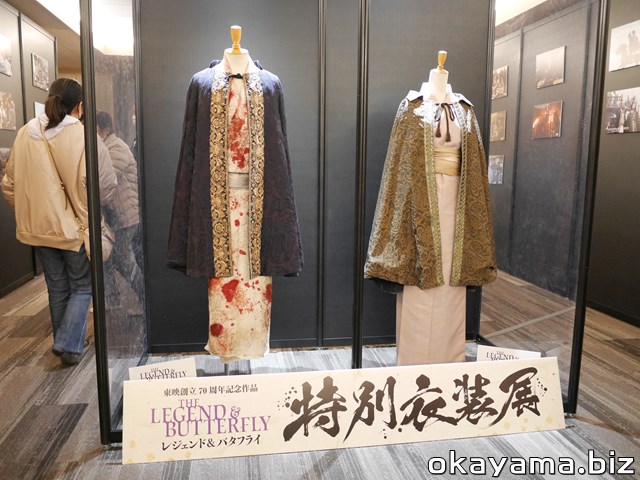
They were intricately designed.
There was also a frog incense burner, which holds significant meaning in the movie.
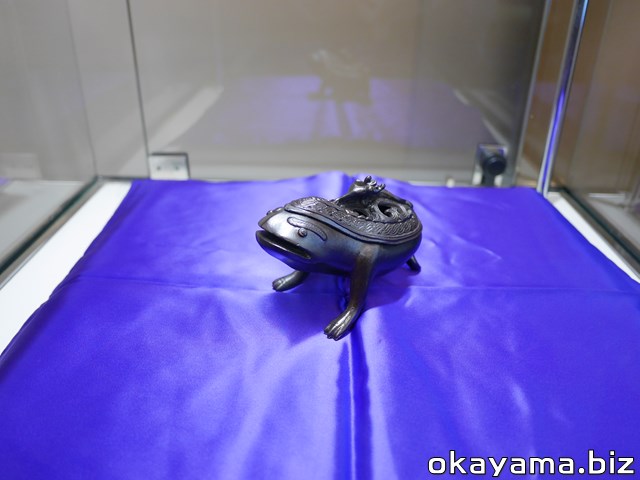
Gilded cups made from the skulls of Asai Hisamasa, Asai Nagamasa, and Asakura Yoshikage, who opposed and were defeated by Oda Nobunaga, were also on display.
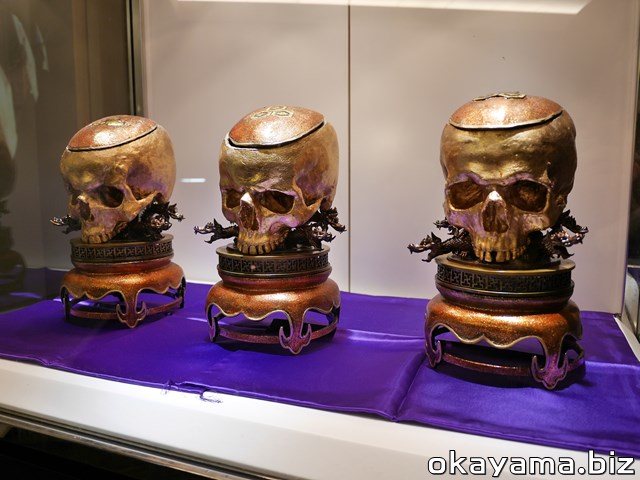
They were very realistically crafted, and Ikurin was quite startled.
Oda Nobunaga and Okayama Castle: 織田信長と岡山城
The reason for the Oda Nobunaga exhibition at Okayama Castle was due to his connection with Okayama.
The reason for the Oda Nobunaga exhibition at Okayama Castle was due to his connection with Okayama. Ukita Naoie, who laid the foundation for Okayama Castle, belonged to the Oda forces in the 1570s and opposed the Mouri forces in the west, making it a frontline under Oda Nobunaga's power.
The original Okayama Castle keep was adorned with gold leaf tiles, a technique first adopted by Oda Nobunaga.
While Okayama Castle is strongly associated with the Okayama domain and the Ikeda family, it was once again felt that the influence of Oda Nobunaga and Toyotomi Hideyoshi was strong during the Warring States period.
The exhibits inside the keep of Okayama Castle have been completely renewed, and it seems they are supervised by historian Isoda Michifumi(磯田道史), who is from Okayama City.
I will also write an article introducing the interior.
